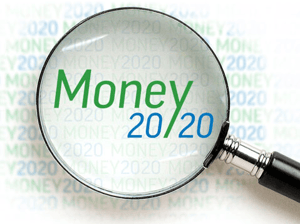 Allstate Insurance’s Director of Consumer Insights, Bob Pankauskas, sat down with CMB President Anne Bailey Berman to talk innovation, mobile, and what clients need to expect from market researchers.
Allstate Insurance’s Director of Consumer Insights, Bob Pankauskas, sat down with CMB President Anne Bailey Berman to talk innovation, mobile, and what clients need to expect from market researchers.
Anne: Innovation isn’t a word people typically associate with insurance, yet the industry’s changed drastically in the past 5 years. How has that impacted you as a Market Researcher?
Bob: Innovation is a big part of what my team is charged with supporting. We’ve been doing a lot more exploration in terms of coming up with new products and services. This also means we need to broaden our toolkit with more exploratory and discovery work. For example, we’re rediscovering the world of ethnography to try and provide products and services for the future. We’ve done several ethnography projects, and we’re using new tools. We even had one of the ethnographies we did turned into a video that was used by the board of directors to showcase some interesting pain points consumers have with their cars. We’re also doing more and more concept testing and developing and exploring ideas.
Anne: So when you’re talking about innovation, you’re talking about two types of innovation. You’re talking about innovation for products and services for Allstate, but you’re also talking about the innovation of information tools in your bucket. How do you determine if the tools you’re using for innovation are really helping you more than traditional tools?
Bob: The thing we’re always searching for is that insight—that visceral reaction that consumers have. Consumers are behaving in a certain way. Why are they behaving that way? Anything that helps us get to a good insight is really useful, and a lot of the nontraditional ways seem to be more useful than the traditional quantitative approach. You have to work a little harder to get insights out of a quantitative approach, so using qualitative helps a great deal. Our CMO will say, “Great, what’s the consumer insight? What is the pain point?” We need to focus on the problem we’re solving for the customer. It’s very easy to ask, but often we find we’re solving a problem for Allstate and not really solving the problem for consumers. We work hard to address that.
Anne: What research challenges are keeping you up at night?
Bob: A really pressing topic of the day is the migration to mobile. It’s only a matter of time before we migrate all of our research platforms to mobile devices. We want our respondents to be able to choose when, how, and where they answer our questions. At this point, we do optimize our surveys for mobile. We pay a lot of attention to question length, simplifying response options, and usability. Our goal is to make our surveys engaging and rigorous.
Of course, trackers are a bigger challenge—it’s painful to live through that period when you say, “. . . and then we changed everything and our numbers are different.” But there are incremental opportunities that mobile provides—being in the moment, getting a real-time view of sponsored events, and just the ability to capture insights when customers are in the midst of an experience. We’re also really excited to utilize consumer-generated images to get more color and context from mobile cameras and not just words and numbers. The shift is inevitable and the opportunities are there. We just need to be mindful of what we lose and what we gain as we make trade-offs in terms of trending.
Anne: What about target markets?
Bob: We’re trying to go after Millennials like everybody else. Everybody is chasing them, and it’s hard to crack the code. Going after a target means going after them well—understanding their motivators and having a product or service that is tailored to them. I think we have found how they liked to be talked to. They want to be treated with respect. They do want to research things online, but they still want to talk to somebody and touch base with them. It’s more about the “how” and less about the “what.”
Anne: What consumer insights get you most excited? Which tools?
Bob: It isn’t necessarily the tool that gives you the best insights. It’s creating receptivity and listening carefully. One of the most powerful insights we had at Allstate was the need for tangibility. Insurance is an intangible product or service. When you’re getting it, you really don’t know what you’re getting.
The thing is that we’re trying to solve the same problem again and again. So the issue is, how can you—as a smart marketer, researcher, or innovator—change your perspective just a little bit and look at the same thing you’ve been looking at for a long time and say, “Oh! Wow! Look at that! That’s new!” Now maybe it wasn’t new, but you changed your perspective and suddenly saw it. Many of the new techniques allow that change in perspective, and that’s pretty powerful.
Anne: And finally, what would you tell market research vendors about how they can best support the decisions you need to make?
Bob: Partner with your clients. Experiment as often as you can because you’ve got to make changes. You don’t put all your bets on the stuff, but you do have to test and learn. And then the second thing is TLDR—too long, didn’t read. It’s a great feeling to know there’s a 100 page deck of tables to support whatever the project is and that you’ve got your money’s worth. But that’s not at all what we pass on to our internal clients. We live in an ADD world. We’re all time starved, so we need to get to that 1 page summary. Tell me the 2 things I need to know—what’s your recommendation and how this is actionable? The ability to do that is what I’m looking for in a partner.
Check out our new case study to see how we helped a top 25 global bank develop a new value proposition and evaluate perceptions of various service channels and transactions.

 Every day there’s a new report about Millennials—they’re in debt/they’re saving for retirement, they’re mobile/they’re going off the grid, they’re hard workers/they’re too entitled to succeed—the list goes on. Brands are desperate to learn what makes this generation tick, but the current research lacks actionable insights for the marketers trying to serve them.
Every day there’s a new report about Millennials—they’re in debt/they’re saving for retirement, they’re mobile/they’re going off the grid, they’re hard workers/they’re too entitled to succeed—the list goes on. Brands are desperate to learn what makes this generation tick, but the current research lacks actionable insights for the marketers trying to serve them.





 I've just returned from a week-long vacation to California, and I'm still feeling the joy (and guilt) from satisfying my ultimate indulgence:
I've just returned from a week-long vacation to California, and I'm still feeling the joy (and guilt) from satisfying my ultimate indulgence: 

